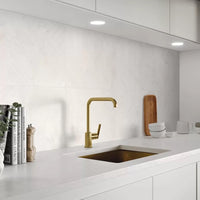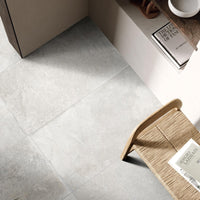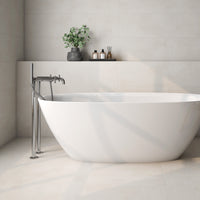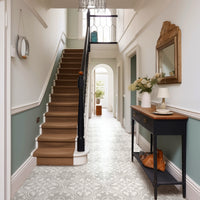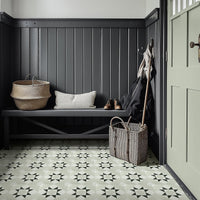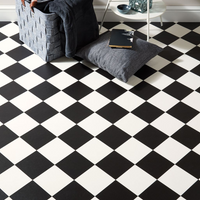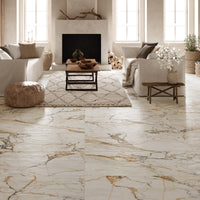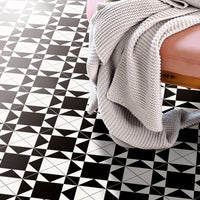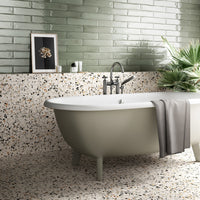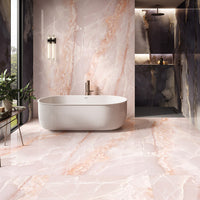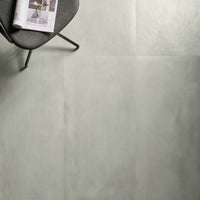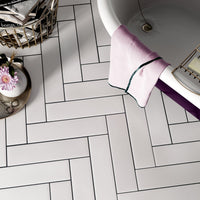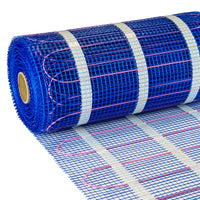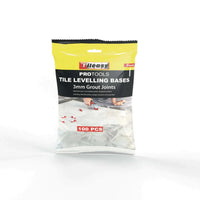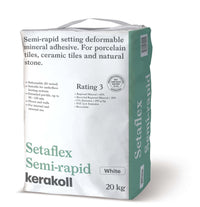Fancy Some Serious Style Points?
Porcelain tiles have been around for some time, but they’re finally having a moment. And not just any moment, this time round they’re the most popular choice when it comes to floors and walls. So roll away the carpet, put away the parquet and strip that garish wallpaper – it’s time to tile.
So, What Exactly Are Porcelain Tiles?
Striktly speaking, porcelain tiles are ceramic tiles, but with a key difference – they’re virtually impervious to water. In practice, this means they’re far harder, denser and more resistant to wear and tear than your average ceramic floor. We’d say they’re the younger, more flexible cousin of ceramic.
How Are Porcelain Tiles Made?
For thousands of years, tiles have been manufactured by baking clay and raw materials in a kiln. Modern porcelain tiles essentially follow the same process, except they use finer clays and are fired at really hot temperatures – by that, we mean way over 1,000 degrees! This gives porcelain the high performance qualities it’s so renowned for.
What’s The Difference Between Glazed And Unglazed Porcelain Tiles?
Have a look at our collection and you’ll notice a wide range of decorated tiles, such as marble patterns and wood like planks. These are generally glazed tiles; the design of the tile is printed onto the porcelain body – if you look closely at the side of the tile you should be able to make out the thin top layer and the thicker main porcelain body.
On the other hand, some porcelain tiles are unglazed. In this case, the tile is ‘full-bodied’ so there’s no additional layer of glaze on top – the colour runs all the way through the tile. While this means there’s less choice when it comes to styles and colour, it makes for a very hardwearing tile – a great example is our Polished Porcelain collection.
Why Are Porcelain Tiles So Popular?
Porcelain tiles have been around for some time, but they’ve haven’t been widely available until recently. Now they’re the number one choice for floors and walls for a simple reason – they’ll make your home look a million dollars without breaking the bank.
And there’s plenty of other great reasons to love porcelain tiles. They’re much harder-wearing than wooden floors, so easy to look after compared to natural stone and durable enough to be used in almost any space, inside or out. Not to mention that thanks to inkjet printing technology, they’re now more realistic than ever before.
What is Inkjet Printing?
Inkjet printing is to tiles what the digital camera is to photography. Even if you haven’t heard the phrase, you’ve probably already seen some inkjet-printed tiles. Although relatively new, this technique has transformed the tile world and allows for incredibly realistic imitations of natural materials such as stone, wood and marble.
Without getting too technical, the traditional ‘roto-colour’ way to decorate tiles had a fair few downsides – there was plenty of repetitive pattern, the design didn’t run to the edges and the clarity was fuzzy at best. With inkjet printing, tile manufacturers can now use industrial sized printers to decorate their glazed porcelain tiles – the end result is a sharp, high definition image with stunning depth of colour.
Do Porcelain Tiles Require A Lot Of Maintenance?
Not much! Because they’re so resistant to scratches and stains, porcelain tiles need very little in the way of care and maintenance.
Unlike with natural wooden floors or luxurious plush carpets, you won’t need to worry about a split glass here or mucky paws there – for family living a regular brush or quick mop should be fine. And if you’ve had expensive natural stone that requires sealing every so often then rejoice; most porcelain tiles don’t need sealing at all.
Are Porcelain Tiles Suitable For All Rooms And Areas?
In the main, yes! Because they’re so durable, porcelain tiles can be used for floors throughout your home. One of the really great things about porcelain tiles is their size – ever larger slabs and planks are available which means they’re great for contemporary living spaces, garden rooms and kitchens. And why stop at floors? More and more people are using porcelain tiles to clad their bathroom and splashback walls, for a seamless and modern finish.
A quick note – It’s always worth checking the PEI rating of a tile just to make sure it’s hard enough for your intended use.
Can I Use Porcelain Tiles Outside?
By definition, porcelain tiles are frost proof so they can be safely used outside. They’re also resistant to UV rays so won’t discolour in strong sunlight, another bonus! However, in wet climates like the UK, we’d suggest choosing a tile with texture or applying an anti-slip surface treatment when your new tiles are laid.
Can I Use Porcelain Tiles With Underfloor Heating?
Porcelain tiles are perfect to use with with both wet and dry underfloor heating systems. They’ll heat up fast, retain warmth well and shouldn’t crack due to changes in temperature.
Remember to use a flexible, cement-based adhesive and if possible, lay insulation boards under your tiles to increase speed-up times and lower your bills.
What Makes Porcelain Tiles A Timeless Choice?
Low maintenance, gorgeous looks and super long lasting… what’s not to like when it comes to porcelain tiles?
And if you choose a tile based on natural materials – such as carrara marble, oak planks or polished concrete – you can be pretty sure your new floor won’t ever go out of fashion! As an added bonus, with regular maintenance your tiles will look good as new for years to come.
What other advantages do porcelain tiles have?
We’ve already discussed how porcelain tiles are incredibly hard-wearing, come in a range of gorgeous designs and need very little on-going care. So, what other advantages do they have over more traditional options such as hardwood planks, vinyl floors and natural stone?
Well, by choosing porcelain tiles you’re doing your bit for the environment. There’s no forest to be chopped down, quarries to be blasted, or toxic chemicals given off. Instead, porcelain tiles are made in state of the art factories, are made from abundant raw materials and often contain high percentages of recycled content.
Guilt-free flooring, in other words!
